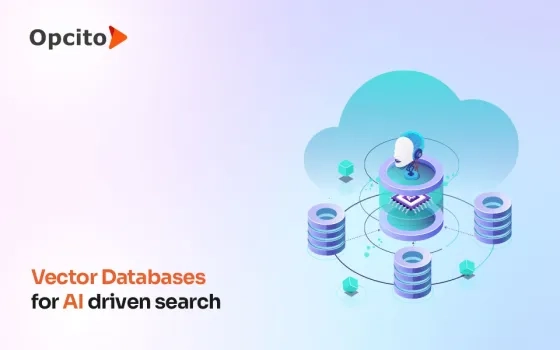Augmented Reality (AR) has emerged as one of the most revolutionary technologies in recent years, blending the physical and digital worlds to create immersive experiences. AR transforms how we interact with technology, from gaming and retail to healthcare and education. However, the driving force behind AR's seamless integration into our daily lives is data science. Data science provides the tools and techniques to process vast amounts of data, train machine learning models, and optimize AR systems to ensure that these experiences are both smooth and responsive. In this blog, we’ll explore how data science powers AR and the key technologies that create these seamless user experiences.
The Role of Data in Augmented Reality
Specifically, AR is an application that enables people to place graphics over/onto the physical environment. For this process to be seamless, however, the AR systems need to express rich knowledge of their environment. This means the ability to acquire, filter and analyze extensive data quotas in a timely fashion. Data science comes into play at multiple levels, including:
1. Sensing and Data Acquisition in the Environment
AR applications depend a lot on data collected from various sensors such as cameras, GPS, accelerometers, and gyroscopes of the physical environment to make sense. Some of this raw sensor data enables the system to distinguish spatial relations and their movements. For instance, unlike conventional GPS navigation systems that provide turn-by-turn voice guidance, an AR navigation application needs to identify where the application is located and what is around to display direction hints over the real-world view. Machine learning approaches are used for data processing of such data and then for its transformation into meaningful inputs for the AR system.
2. Object detection The first application of computer vision related to object recognition is object detection.
One of the main difficulties that must be solved to realize AR is correctly identifying objects and their surroundings. With the help of data science, namely machine learning and deep learning methods, AR systems can recognize objects, follow them in real-time, and comprehend their relation to the user’s environment. For instance, in the case of a retail AR app, where the user is virtually trying out clothes, the app must identify the user’s body form, position, and movement for the worn virtual outfit to reflect their real-life equivalent.
Whenever data scientists can obtain labeled datasets, they employ them to train models that can perform object detection and classification. Object detection algorithms, for example, employ methods such as convolutional neural networks (CNNs ) in a bid to enhance the detection success rate. The more accurate and efficient this object recognition is, the smoother the augmented reality experience will be.
3. Spatial Mapping and Tracking
Another critical element in AR is spatial augmentation where here a real-time 3D model of an environment is created. It enables the creation of AR applications to fix virtual objects within certain physical environments. For instance, in some new applications such as the gaming AR application like Pokémon Go, the virtual characters must be displayed as part of a real environment.
Such spatial understanding is based on the use of simultaneous localization and mapping algorithms which are supported by the data computational methods. SLAM overlays real-time sensor data on a machine-learning algorithm to establish the user's relative position as it creates a dynamic map of the area. This is so because in this process the system constantly changes with the user's movement. Big data in turn assists this process by analyzing great volumes of information and increasing prediction of movement and consequent acting on the altered circumstances.
Improving the use and experience of information products with the help of data science
Thus, data science is not just used to implement the fundamental processes in AR but also contributes to the augmentation of user satisfaction. Prediction, personalization, and user behavior analysis all fall within the realm of data science and enable AR to be crafted in a way that is natural, adaptive, and agreeable to the user.
1. Auto-suggestions for Live Interactions
Real-time interaction is crucial in an AR environment to achieve an end-to-end solution. Through data science, AR systems can predict users’ actions and react to them in real-time. For instance, in a system where an augmented reality of education application is liked by a student, the system can guess the kinds of content more likely to be viewed by the student and thus, make learning exciting and efficient.
Another part of the process is related to predictive models used to optimize system performance. For instance, after observing past data, the AR system can determine where an object they wish to display to the user should be placed in the user’s field of view given the environment and the user's movements.
2. Personalization Through Data
One of the major trends in the AR world is personalization, and data science is the core here. Using machine learning, the application can process big amounts of user data to deliver a unique AR experience, so it may be a gaming app with unique content based on user’s preferences, a retail AR app with target product recommendations or an education app with individual learning experiences.
Location, mood, and interest context data must be captured so that the data scientists recommend systems that align the present AR to the user. For instance, an AR shopping app can suggest items a user has previously visited, bought, or shown interest in to improve the shopping experience.
3. Some of the techniques are Natural Language Processing (NLP) and Voice Interfaces
Another trend observed in a constantly increasing number of AR is using voice commands or conversational UI. These voice interfaces can take voice commands because of data science, especially in applying NLP.
Spoken language can be also translated and understood by NLP models that let the users control AR systems through voice. For example, in an AR home assistant, using voice, a user can make a query for information or request for operations on such devices in the smart home, and the AR system in return interprets the command to respond appropriately. Data science can only enhance and update these models based on voluminous voice interaction data.
Challenges and Future of Data Science in AR
Data science has brought great evolution to AR technology, yet, a few issues need to be addressed when it comes to creating immersive user experiences. The challenges are speed and privacy, and unlike the current simple systems that can work in simple environments, there is a need for complex systems that can learn in complex environments.
1. Real-Time Processing of Big Data
AR applications create large volumes of data in real-time, which must be processed to provide a seamless interaction. Thus, data scientists have to create algorithms that would support this traffic flow faster to avoid performance degradation.
2. Data Privacy and Security
Since many AR systems are integrated with user data, privacy and security issues have become a concern. Because user data is often collected by data scientists and analyzed, they must ensure that such data is de-identified, encrypted, and safeguarded against disclosure.
3. When it comes to Object recognition and Spatial Mapping,
Enhancing has major effects.AR continues to have challenges in identifying objects in complex scenes, or when there is low lighting. The further progress of machine learning and computer vision technologies will play a significant role in the further development of augmented reality, based on which it is resolved to create functional avatars.
Conclusion
Data science is the backbone of augmented reality, enabling AR systems to understand and interact with the physical world seamlessly. From object recognition and spatial mapping to predictive analytics and personalization, data science powers the core technologies that make AR experiences possible.




















